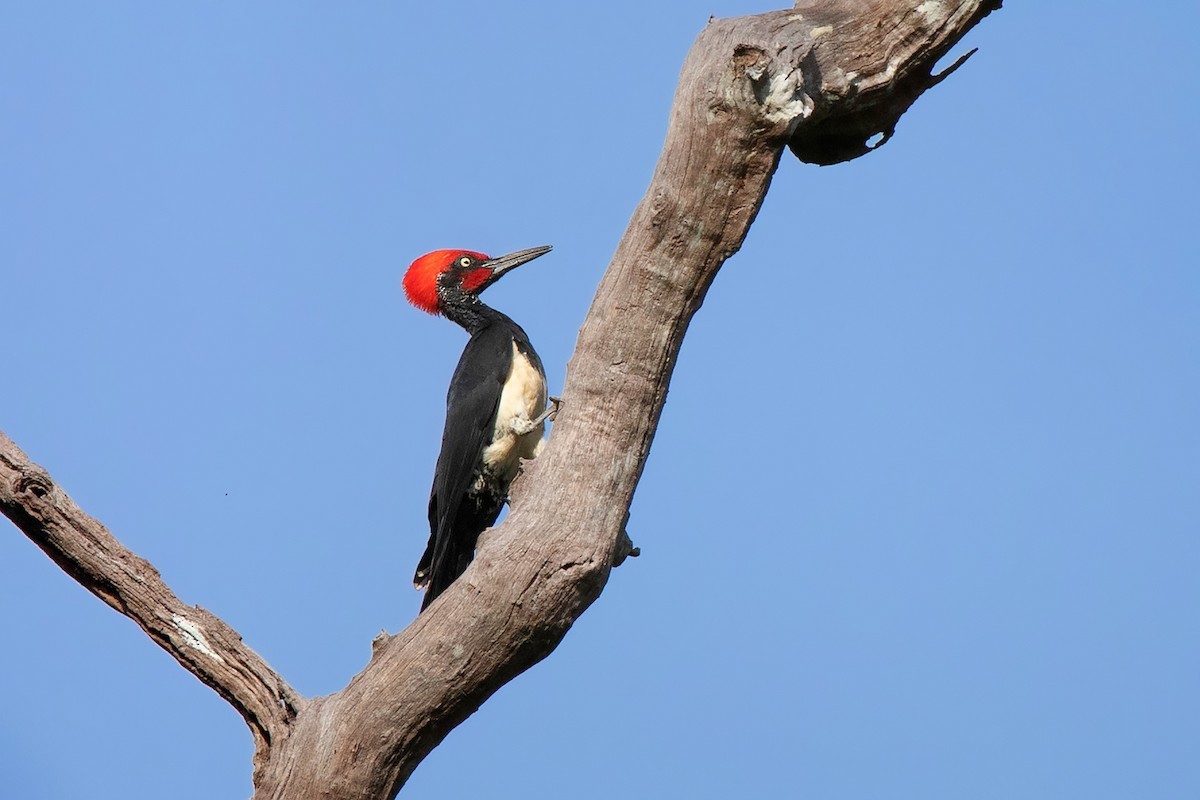White-bellied Woodpecker
A species of Woodpecker Scientific name : Dryocopus javensis Genus : Woodpecker
White-bellied Woodpecker, A species of Woodpecker
Botanical name: Dryocopus javensis
Genus: Woodpecker
Content
Description General Info
 Photo By Ayuwat Jearwattanakanok
Photo By Ayuwat Jearwattanakanok Description
This species is one of the largest living species of woodpecker. Adults range in size from 40 to 48 cm (16 to 19 in) and are second in size only to the great slaty woodpecker among Asian woodpecker species. The species is considered closely related to the more northern black woodpecker and the North American pileated woodpecker and is similar in size to these species. Body mass can vary from 197 to 350 g (6.9 to 12.3 oz). Among standard measurements, the wing chord is 20.5 to 25.2 cm (8.1 to 9.9 in), the tail is 14.3 to 18.9 cm (5.6 to 7.4 in), the bill is 4.6 to 6 cm (1.8 to 2.4 in) and the tarsus is 3.2 to 4.3 cm (1.3 to 1.7 in). The subspecies hodgsonii has whitish underwing coverts and a white rump. The face lacks white, but juveniles of the nominate race can have white streaks on the throat. Differences from the other Southeast Asian subspecies in the vocalizations and morphology of this species are suggested to be large enough to raise this to full species status. Solitary adults may spend an hour foraging at a suitable tree. The subspecies hodgsonii of India breeds from January to May, mainly in large dead trees, often using the same tree year after year. The normal clutch is usually of two eggs. They feed mainly on insects such as ants or grubs obtained mainly from under bark, but sometimes take fruit. Although shy, they can nest close to well-used tracks and human disturbed areas. They have a range of calls from a short, sharp "kuk" to more intoned "kyuk", "kew", "kee-yow" calls. The longer calls are given prior to flying off. They roost within holes. 
Size
48 cm
Nest Placement
Cavity
Feeding Habits
White-bellied Woodpecker's diet is varied, mainly consisting of large ants, termites, beetle larvae, other insects, and fruit. Solitary or in small groups, white-bellied Woodpecker forages on trees and ground, skillfully pecking and stripping bark to access food. White-bellied Woodpecker displays unique persistence, sometimes spending hours excavating deep into wood at favored sites.
Habitat
White-bellied Woodpecker's habitat includes moist deciduous, evergreen, and pine forests, with a presence in areas containing bamboo stands. They adapt to both primary forest settings and disturbed areas, including selectively logged sites and secondary growth forests with sufficient deadwood. Their range extends to human-modified environments like plantations and gardens, predominantly in lowland tropical and subtropical regions.
Dite type
Insectivorous
General Info
Feeding Habits
Bird food type
Behavior
This large black woodpecker is usually seen singly or as a pair, which may sometimes be accompanied by a third bird. They have a dipping in which the loud single note, a laugh-like chiank call, is produced. They also produce loud drumming, especially in the breeding season. The breeding season is mainly January to March. The nest is built in a large dead tree, often in open forest. Two white eggs are the usual clutch. In Bastar in central India, the squabs are sought after by tribals, resulting in the rarity of these birds there. 

 Photo By Ayuwat Jearwattanakanok
Photo By Ayuwat Jearwattanakanok